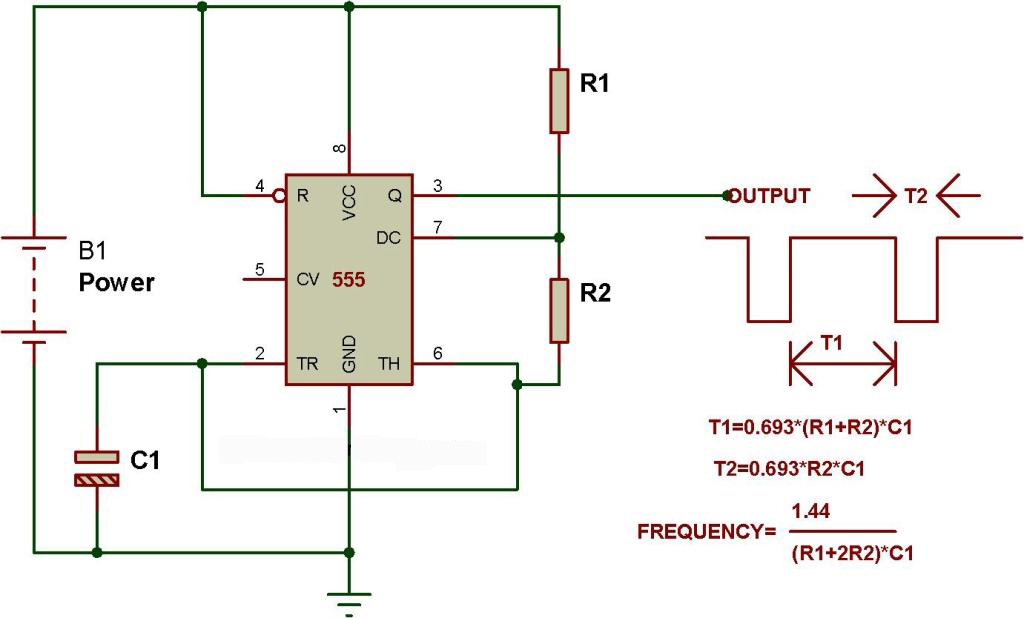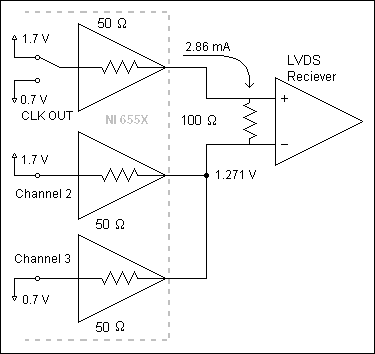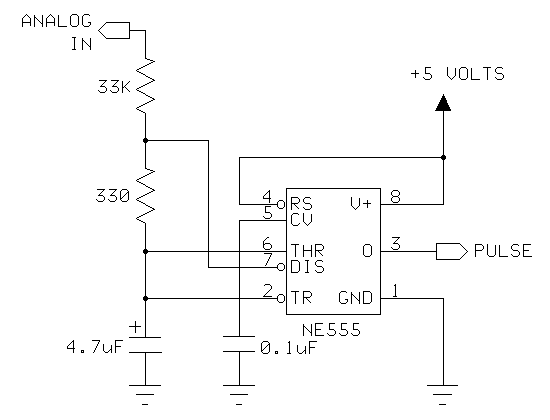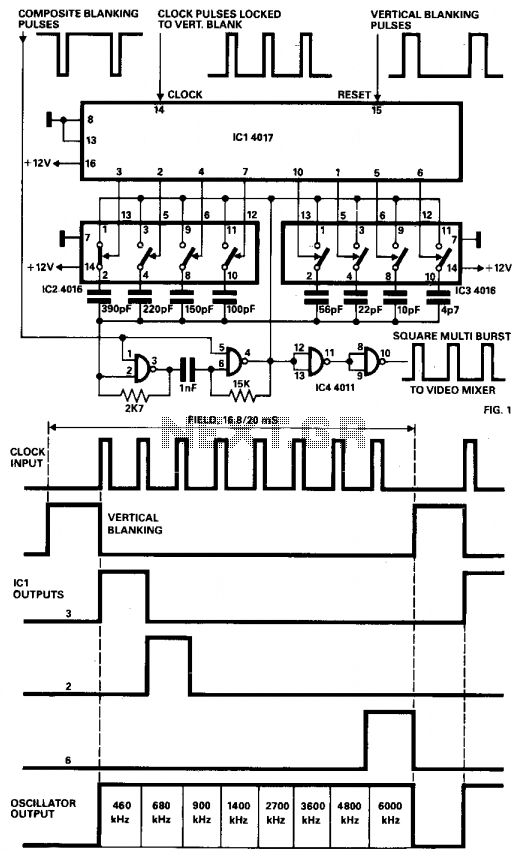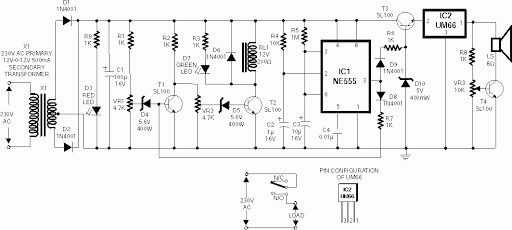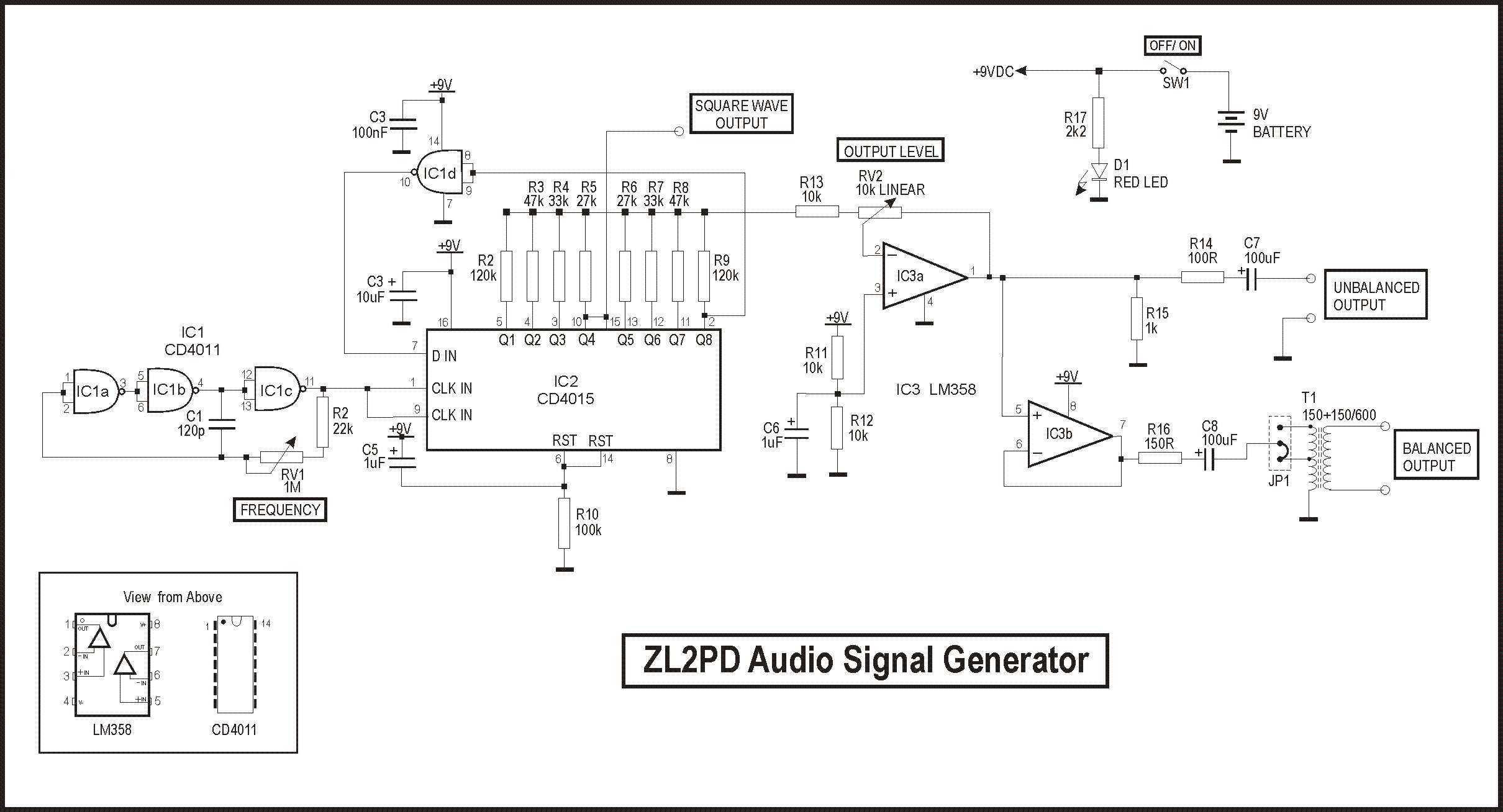
555 tone generator
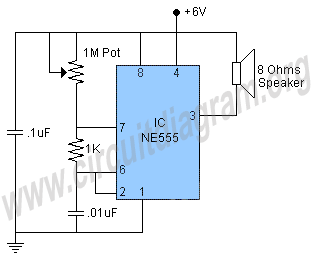
This is a 555 tone generator circuit based on the NE555 timer IC. The NE555 is a well-known integrated circuit utilized in various applications and performs a multitude of functions. In this circuit, the IC operates as an astable oscillator, generating a tone when power is supplied. A 1M potentiometer is employed to adjust the pitch of the tone.
The 555 timer, particularly in its NE555 configuration, is widely recognized for its versatility in generating precise timing, oscillation, and pulse-width modulation. In the astable mode, the NE555 continuously switches between its high and low states, producing a square wave output. This output can be connected to a speaker or buzzer to produce audible tones.
The circuit consists of a few essential components: the NE555 timer, resistors, capacitors, and the aforementioned 1M potentiometer. The resistors set the charge and discharge times of the timing capacitor, effectively determining the frequency of the oscillation. The timing capacitor influences the duty cycle and frequency of the output waveform.
When power is applied, the capacitor begins to charge through the resistors, and once it reaches a threshold voltage, the NE555 toggles its output state. The frequency of the oscillation can be calculated using the formula:
\[ f = \frac{1.44}{(R_A + 2R_B) \cdot C} \]
where \( R_A \) is the resistance connected to pin 7 (discharge), \( R_B \) is the resistance connected to pin 6 (threshold), and \( C \) is the capacitance value of the timing capacitor.
In this design, the 1M potentiometer allows for real-time adjustments to the resistance value, thereby enabling the user to modify the pitch of the tone generated. By turning the potentiometer, the frequency output can be varied, producing different sound pitches.
The circuit can be powered by a standard DC power supply, typically within the range of 5V to 15V, depending on the specifications of the NE555 timer being used. Proper bypass capacitors should be added near the power supply pins of the NE555 to ensure stable operation and minimize noise.
Overall, this 555 tone generator circuit serves as an excellent example of how the NE555 timer can be utilized in practical applications, demonstrating its functionality as an astable oscillator to produce variable audio tones.This is a 555 tone generator circuit based on NE555 timer IC. NE555 is a very famous IC used in many circuits and performs variety of tasks. In this circuit the IC is used as an astable oscillator and the circuit will generte a tone when power is applied. The 1M potentiometer is used to adjust the pitch of the 🔗 External reference
The 555 timer, particularly in its NE555 configuration, is widely recognized for its versatility in generating precise timing, oscillation, and pulse-width modulation. In the astable mode, the NE555 continuously switches between its high and low states, producing a square wave output. This output can be connected to a speaker or buzzer to produce audible tones.
The circuit consists of a few essential components: the NE555 timer, resistors, capacitors, and the aforementioned 1M potentiometer. The resistors set the charge and discharge times of the timing capacitor, effectively determining the frequency of the oscillation. The timing capacitor influences the duty cycle and frequency of the output waveform.
When power is applied, the capacitor begins to charge through the resistors, and once it reaches a threshold voltage, the NE555 toggles its output state. The frequency of the oscillation can be calculated using the formula:
\[ f = \frac{1.44}{(R_A + 2R_B) \cdot C} \]
where \( R_A \) is the resistance connected to pin 7 (discharge), \( R_B \) is the resistance connected to pin 6 (threshold), and \( C \) is the capacitance value of the timing capacitor.
In this design, the 1M potentiometer allows for real-time adjustments to the resistance value, thereby enabling the user to modify the pitch of the tone generated. By turning the potentiometer, the frequency output can be varied, producing different sound pitches.
The circuit can be powered by a standard DC power supply, typically within the range of 5V to 15V, depending on the specifications of the NE555 timer being used. Proper bypass capacitors should be added near the power supply pins of the NE555 to ensure stable operation and minimize noise.
Overall, this 555 tone generator circuit serves as an excellent example of how the NE555 timer can be utilized in practical applications, demonstrating its functionality as an astable oscillator to produce variable audio tones.This is a 555 tone generator circuit based on NE555 timer IC. NE555 is a very famous IC used in many circuits and performs variety of tasks. In this circuit the IC is used as an astable oscillator and the circuit will generte a tone when power is applied. The 1M potentiometer is used to adjust the pitch of the 🔗 External reference
